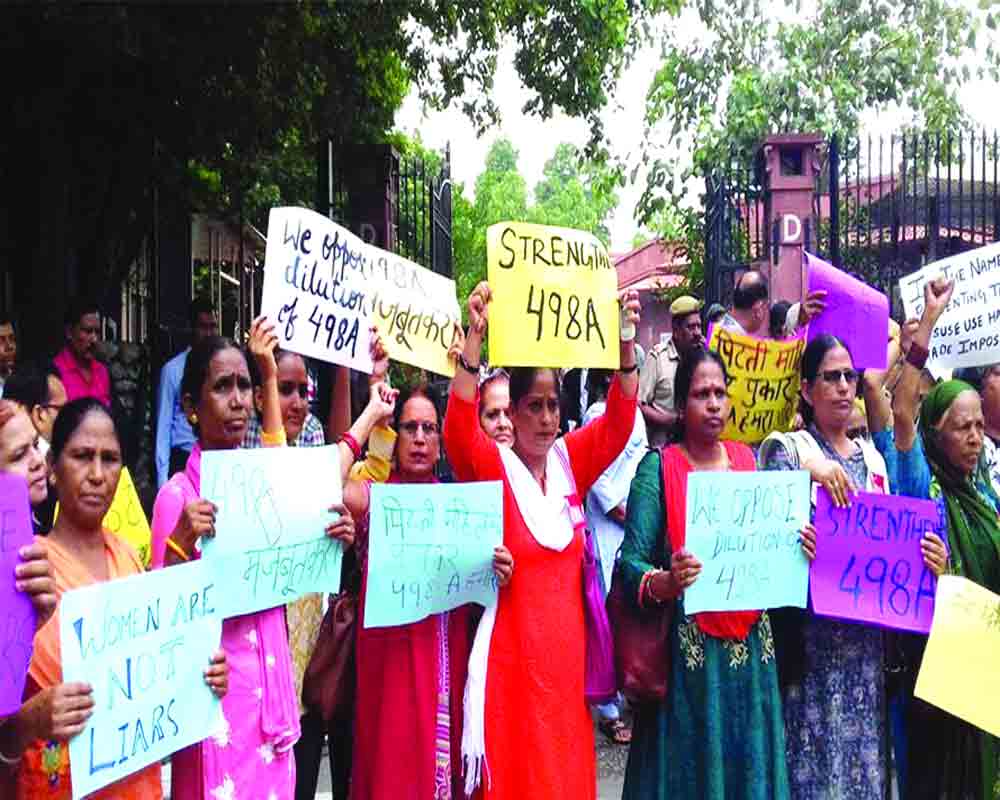The recent Supreme Court verdict in the Akkamahadevi case unravels a complex interplay between legal statutes and justice, challenging conventional interpretations of dowry-related crimes
Where the confluence of human suffering and the pursuit of justice unfolds as a multifaceted riddle, the recent verdict of the Supreme Court of India in the case of Akkamahadevi, a woman whose life was tragically cut short by burn injuries in 2010, unfurls a captivating tableau for a profound exploration of the intricate interplay between legal statutes and the moral compass of justice. This case defies conventional wisdom, challenging the traditional interpretations of the Indian Penal Code (IPC) Sections 304B (dowry death) and 498A (cruelty to woman by husband or his relatives), and invites us to scrutinise the very essence of fairness in the legal system.
THE CASE OF AKKAMAHADEVI
The case of Akkamahadevi highlights the deep-rooted problems associated with dowry-related harassment and crimes against women in India. Her tragic end prompts us to critically examine the interpretation of evidence and the broader justice system, particularly with regard to the interpretation of Section 304B.
The prosecution’s case pivoted on the consistent demand for dowry and the torture inflicted upon the deceased, culminating in her self-immolation. The core question before the court was whether the dying declaration could be the sole basis for conviction, given the victim’s severe burn injuries. The court referred to precedents and emphasised that the rule requiring corroboration is a rule of prudence, not an absolute necessity. But this decision raises essential questions about justice: Can a victim’s statement, even when severely injured, be relied upon without corroboration?
In the case of Akkamahadevi, the dying declaration stated that the deceased was unable to tolerate the torture meted out by the accused, which drove her to self-immolation. This declaration serves as the cornerstone of the prosecution’s case, directly linking the accused to the alleged dowry-related harassment that ultimately led to Akkamahadevi’s tragic self-immolation.
Here, the court’s decision hinges on the idea that the physical disability resulting from burn injuries should not disentitle a victim from making a statement, provided it was made consciously, knowing the consequences. This assertion challenges the traditional interpretation of the rule of corroboration as a mere rule of prudence, suggesting that even in the face of severe injuries, a victim’s statement can be relied upon.
The judgment heavily leans on the dying declaration, citing precedents that stress the need to treat it as credible evidence. It asserts that the victim’s extensive burn injuries, covering an alarming 70 per cent to 80 per cent of her body, should not discredit her statement, as long as it was made consciously and knowingly. However, the critical analysis of this point is warranted. Burn injuries of this magnitude can severely affect a person’s ability to communicate clearly and coherently. The judgment’s apparent oversight of the potential limitations imposed by the victim’s physical state begs the question: Was she genuinely in a condition to make a statement that should hold up in court?
UNPACKING ‘SOON BEFORE HER DEATH’
The verdict also reignites the debate over the interpretation of Section 304B, which requires that the cruelty or harassment leading to death occurred “soon before her death.” This interpretation was solidified in the case of Bansilal vs State of Haryana (2011). However, the pivotal issue is the distinction between Section 304B and Section 498A. Section 304B is specific to dowry deaths, demanding that the cruelty or harassment leading to death occurs “soon before” the victim’s demise, while Section 498A casts a broader net, encompassing cruelty and harassment against women without specifying a strict timeframe.
The judgment suggests that the prosecution failed to establish a clear link between the alleged dowry harassment and the victim’s self-immolation, leading to the overturning of Section 304B convictions.
This interpretation raises questions about the rigidity of Section 304B and the law’s ability to address the intricate dynamics of real-world situations. Did the prosecution indeed falter in proving the connection between harassment and suicide, or does this case expose a fundamental flaw in Section 304B’s strict timeframe requirement?
CONCLUSION
The Akkamahadevi case serves as a stark reminder of the convoluted issues surrounding dowry-related harassment and related crimes in India. In the context of this article’s critical analysis, the focus shifts to the phrase “soon before her death” in Section 304B, revealing the glaring gap between legal requirements and the real-life complexities of dowry-related crimes. It calls for a re-evaluation of these laws, emphasising the importance of reforms that acknowledge the intricate dynamics of such cases, ensuring that justice prevails while upholding the rights of both the accused and the victims.
In a legal system that strives to balance the rights of the accused with the pursuit of justice for victims, can we truly achieve fairness without re-evaluating and reforming laws that may not adequately address the complexities of real-life situations, such as dowry-related harassment cases?
(The writer practices law at the Supreme Court of India)


























